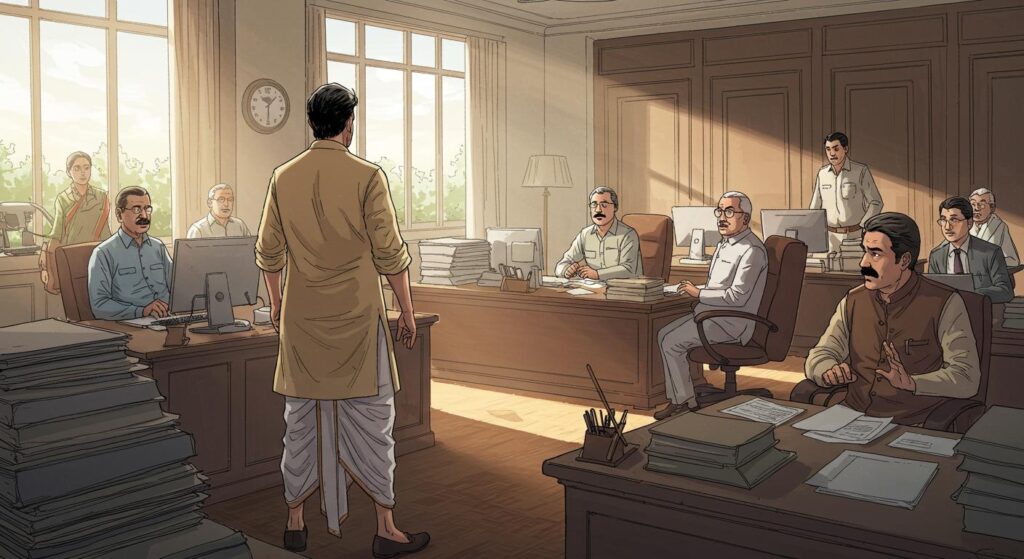If you were hoping that the ongoing standoff between India and Pakistan might someday trade places with neighborly sportsmanship, I regret to report that—at least on the border at Sadqi and Attari-Wagah—progress is measured in vertical feet, not friendly meters. According to a report by inkl, this summer’s simmering rivalry has found a new, slightly dizzying front: dueling flagpoles, each aspiring to scrape a bit more sky than the other.
Competitive Hoisting
It’s difficult not to admire the sheer audacity of it: two nuclear-armed states whose relationship swings between tense stares and actual warfare, and yet—amid warnings and saber-rattling—they’re engaged in what inkl refers to as “flag warfare.” At the demure border outpost of Sadqi, India’s new 200-foot mast lifts the tricolour well above Pakistan’s own 165-foot effort at Sulemanki, as reported by inkl. Indian military analyst Rahul Bedi, speaking to inkl, points out that while this “flagpole war” may appear symbolic on the surface, it carries significant emotional and nationalist weight for people living near the border.
The symbolism here is impossible to miss. These border clashes aren’t just for show, but the shows themselves have become events of almost ritual importance—a spectacle produced with the intensity of Broadway, but with more synchronized stomping and less singing. On Independence Day, both sides bring out flags large enough to substitute for circus tents, though inkl notes that giant flags don’t fare well in the boisterous border wind—a challenge that’s still unsolved. As Bedi told inkl, these titanic banners often end up in shreds within weeks, serving as a somewhat poetic reminder that nationalism can be as fragile as it is grand.
Flag Arms Races and Stadium Dreams
There’s also a measure of escalation that feels faintly absurd, even by the region’s standards. The height contest has been running along the Punjab border for years, but as inkl documents, India’s Attari flagpole has soared from 360 feet in 2017 to 418 feet, surpassing Pakistan’s 400-foot mast in Wagah along the way. Rather than respond with an even taller pole, Pakistan’s latest counter move described by inkl involves plans for a multimillion-dollar Mughal-style stadium and a theme park that will triple the grandstand’s seating. If you can’t win by altitude, why not win with audience volume?
The competitive zeal is also on full display each evening at the now-famous border ceremonies. According to inkl, these nightly rituals started as a gesture of mutual respect in 1959, when Indian and Pakistani officers—who had previously served together in the British colonial army—agreed to lower their flags simultaneously each evening. Over time, the ceremony has evolved into a highly choreographed and boisterous display, blending military drill with theatrical precision, as detailed in the inkl article.
Even the uniforms are part of the rivalry—India’s soldiers appear in khaki, topped with tall red fan-shaped turbans, while Pakistan’s Rangers opt for black uniforms with green accents and towering ceremonial hats. The routines mirror each other closely, though according to inkl, the soldiers do not rehearse together; each side simply adjusts on the fly to match pace, stomps, and salutes. As crowds fill the grandstands and chants echo from one side to the other, Bedi described the scene to inkl as “pure theatre.”
When Grand Gestures Outrun Gravity
For all the military pageantry and technical escalation, the flagpole drama treads a line between subversively theatrical and unintentionally comedic. According to inkl, these supersized banners are often battered by the wind and reduced to rags within weeks of being unfurled—a kind of unintended punchline dangling 400 feet above the ground. It’s hard not to wonder: how much does altitude matter if your banner can’t survive the month?
One could ask, does this competitive construction actually reflect strength? Or is it, in the end, just another stage for the centuries-long tension—a spectacle as reliable as the monsoon but perhaps not much more permanent?
Reflections from the Sidelines
As explored throughout inkl’s coverage, these displays are more than mere symbolism for the crowds packed into grandstands on both sides of the border. The drama, the carefully matched gestures, the relentless striving for a few more feet of altitude, all speak to a rivalry unlikely to fade, even if the flags themselves do. There’s something deeply human about trying to be, quite literally, taller than your neighbor—even when the practical payoff is picking windblown polyester out of the wheat fields.
So while it’s tempting to dismiss the annual flagpole race as a quirk of local custom, is there not something revealing—and perhaps a little tragic—about the way nations sometimes choose their battlefields? Today’s contest is measured not in lives, but in feet of flagpole. For those watching from afar, it’s both reassuring and, maybe, just a little bit heartbreaking. After all, how many feet higher can the future possibly go?







